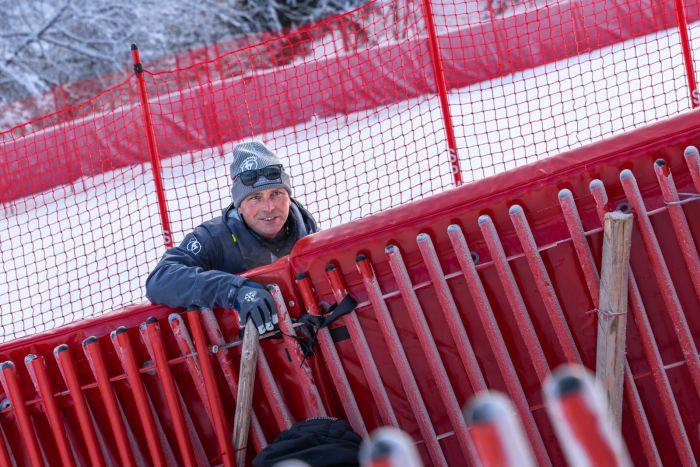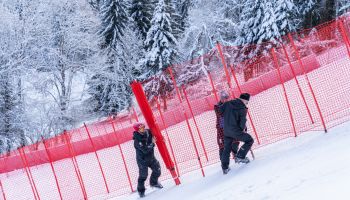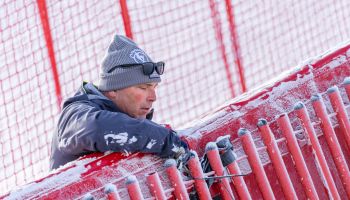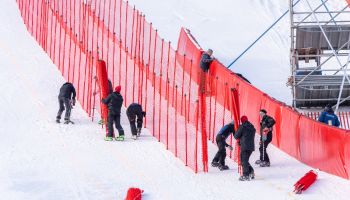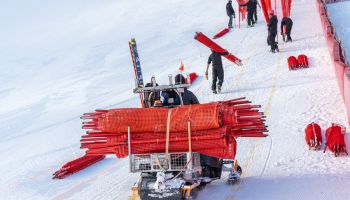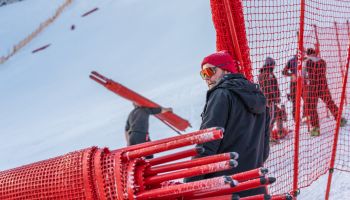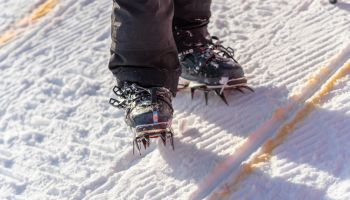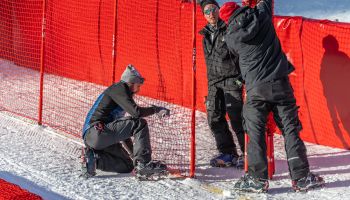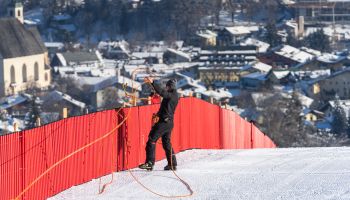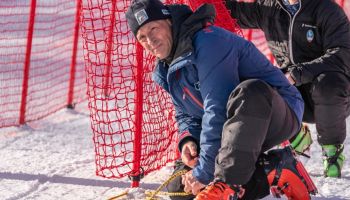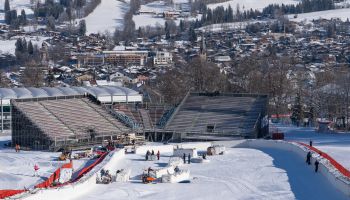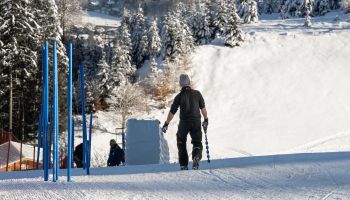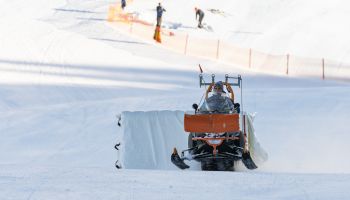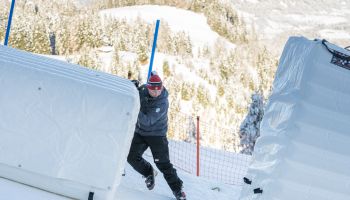On the safe side with Tom Voithofer
The 30-member safety team has one of the most strenuous jobs in the weeks leading up to the races. Tom Voithofer and his team are responsible for installing around four kilometres of A nets and 17 kilometres of B nets. "We have to have a good head for heights be surefooted – as we are out and about using crampons – be fit and strong", says the safety chief.
Every fan and of course everyone on the Organising Committee hopes for safe and injury-free Hahnenkamm Races year after year. If a racer does stray from the race line, Tom Voithofer's crew comes into play. The 30-strong team is responsible for installing all A nets, B nets, BC nets, sliding barriers, impact protection mats and air cushions. If that sounds like an extensive undertaking, that’s because it is: "Our work always starts on 2nd January, and we aim to be finished by the last Sunday before the races. A-nets are mounted over a stretch measuring four kilometres, B-nets are installed over a total of 17 kilometres, plus 153 Airfences and around 100 impact protection mats," says Tom Voithofer, giving a brief insight into the huge tasks involved.
Working in the safety team is not for the faint-hearted, as you need to have a good head for heights as well as a precise touch, especially when attaching the A-nets: "You also need to be sure-footed, because we're out and about with crampons, be in good shape and possess a modicum of strength," says Tom Voithofer with a knowing grin. After all, an air cushion aka Airfence weighs around 150 kilograms and then the colossus has to be assembled in very steep terrain.
The best thing for Team Safety must therefore be when all the nets, fences, tarpaulins and safety pads are stowed away unused after the Downhill runs and Slalom, right? "It is indeed. For us, the definition of success at the Hahnenkamm Races is when nobody crashes into the barriers. And if they do, they should be able to get up unscathed and still make it over the finish line," says Tom Voithofer hopefully - year after year.
Photo © K.S.C./alpinguin

